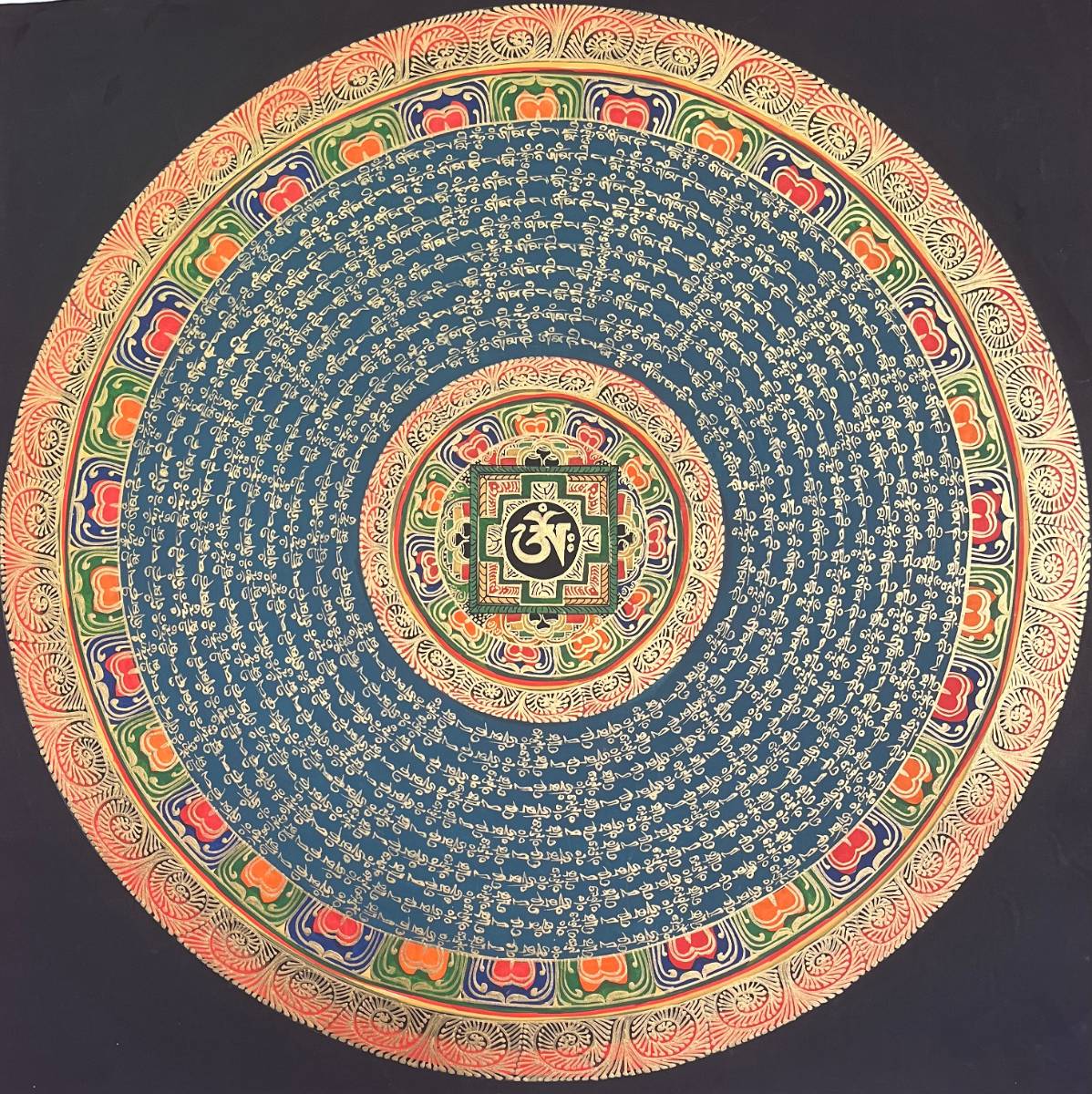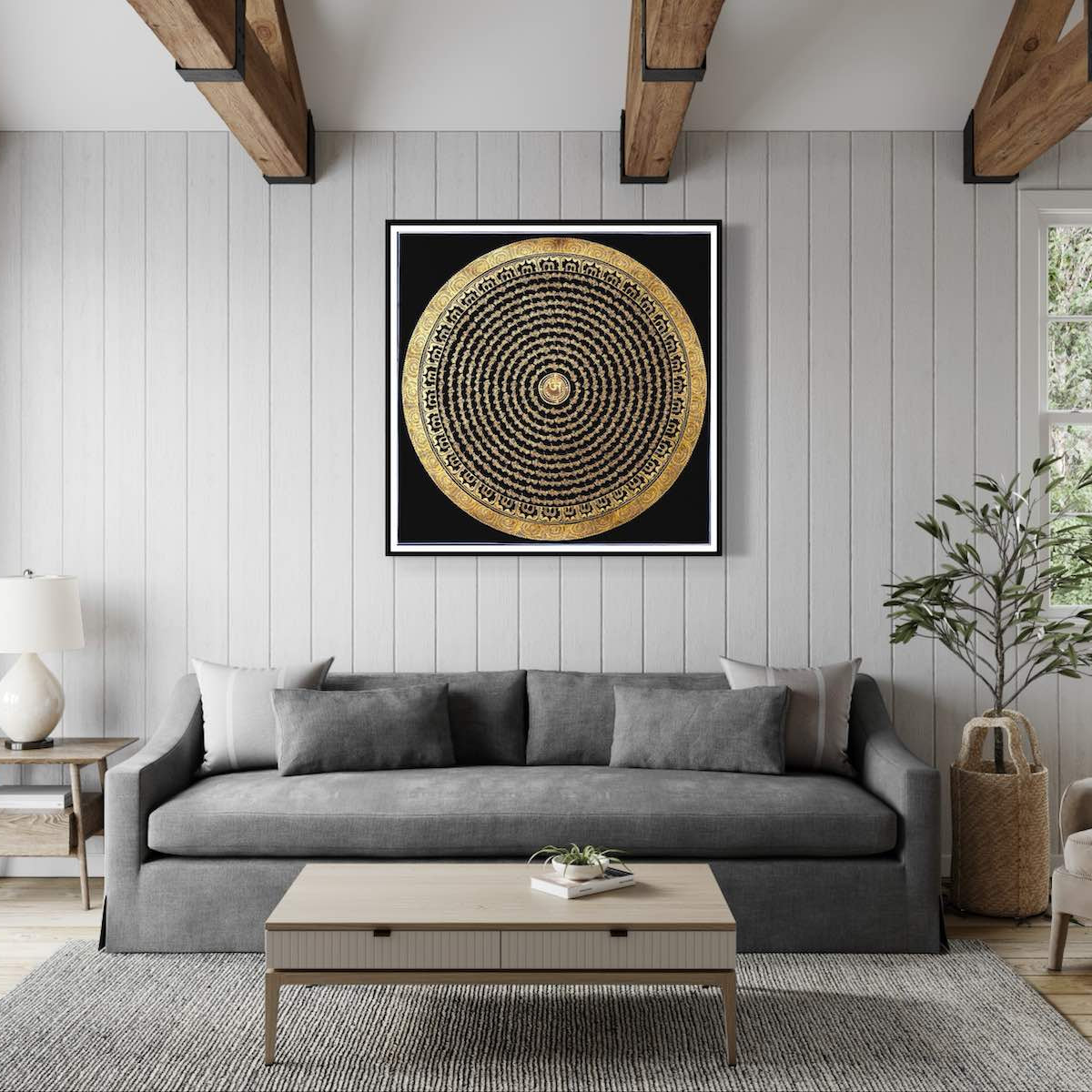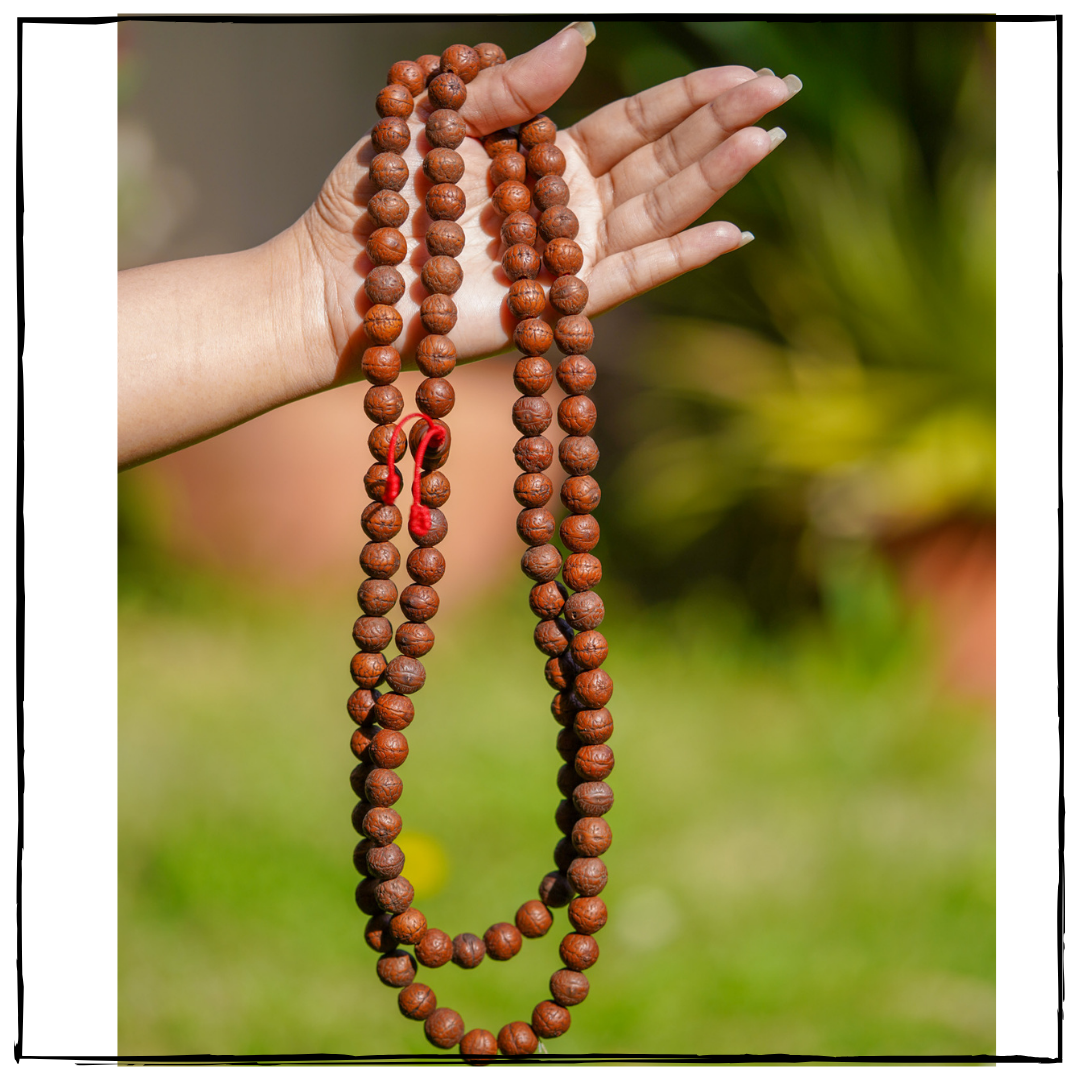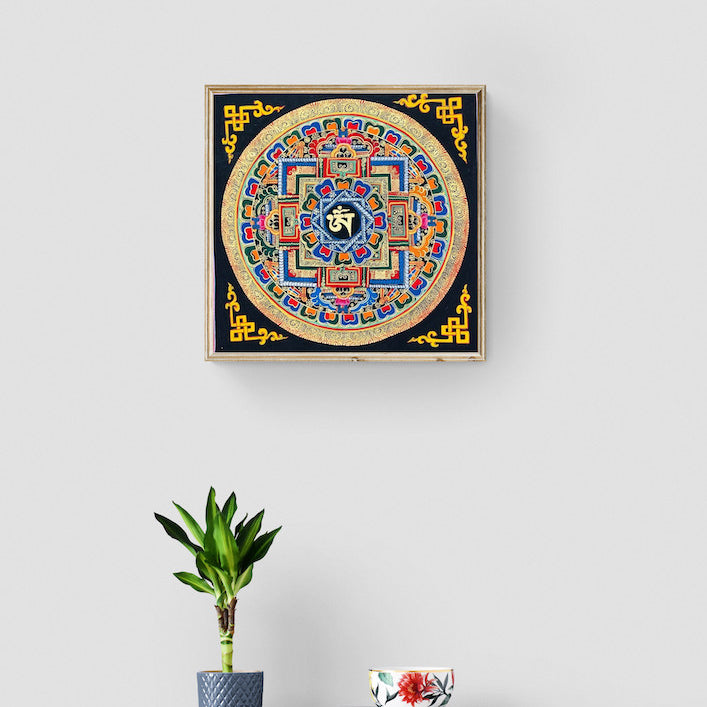Green Tara Thangka Painting
Description
This exquisite Tibetan Buddhist visual art showcases Green Tara, who is renowned for her compassion and rapid assistance. Her green hue represents her embodiment of the highest spiritual understanding. Meticulously handcrafted with high-quality silk mineral paints in Nepal, each Green Tara Thangka Painting is a unique work of art and an excellent addition to any home décor.
Green Tara is depicted as a youthful female figure atop a lotus throne. Her right hand is expressed in varada mudra, a gesture indicating her willingness to help the devoted. Her left hand holds a lotus of three petals, embodying her serenity and freedom from aversion, ignorance, and attachment. The color of Tara is generally a shade of green, speaking to her empathy and energy. Her attire and jewelry are decorated with jewels and gems. Thangka artworks traditionally display images of the natural and cosmic world, including mountains, rivers, clouds, and stars - these depictions vary depending on the artist.
This Green Tara Thangka painting showcases fine artistry, exacting adherence to traditional iconography, and makes a beautiful devotional object for practitioners of Tibetan Buddhism. Green Tara's Thangka can offer spiritual solace, and her compassionate, quick responses are frequently admired.
Product Specification:
- Hand Painted
- Materials: Semi-Precious Natural Minerals
- Base: Cotton Canvas
- Origination: Nepal

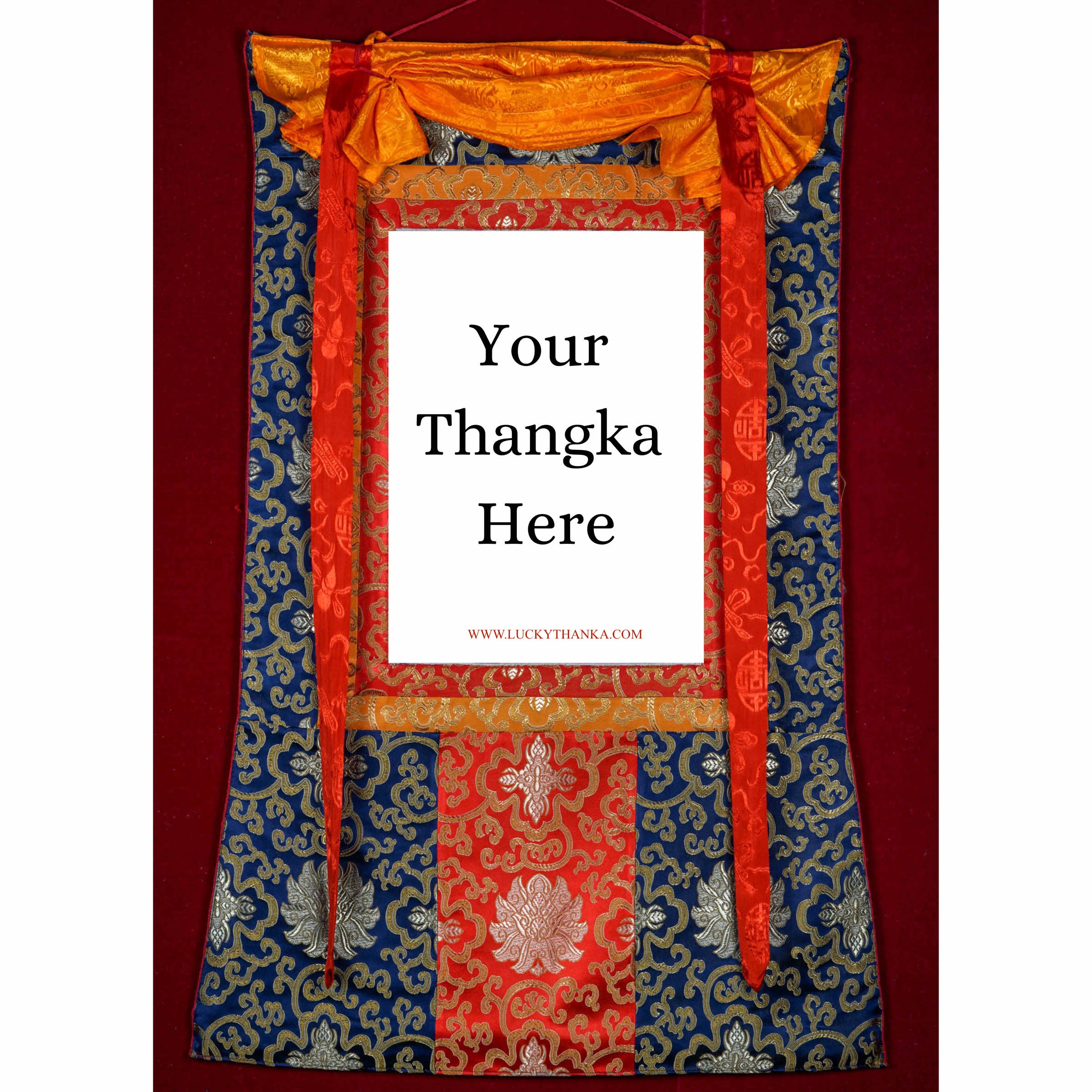

Hand Embroidery Brocade
Want to add a Brocade to your beautiful Thangka Painting? Traditional Style Brocade has been one of the most popular form of mounting as it has a greater religious merit.
Note: Make sure you have added the Thangka to your cart first.
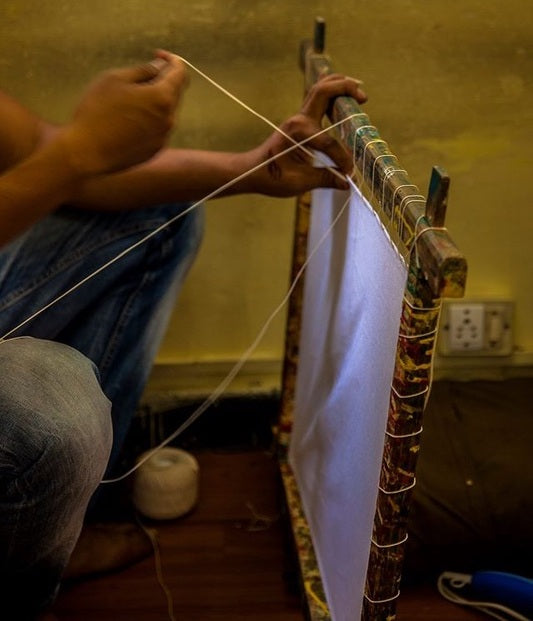
100% Cotton Canvas
Preparing the Cotton canvas before starting to paint a Thangka. This process includes washing, drying, stretching, sizing and everything needed to make a perfect base for the thangka to last for centuries.
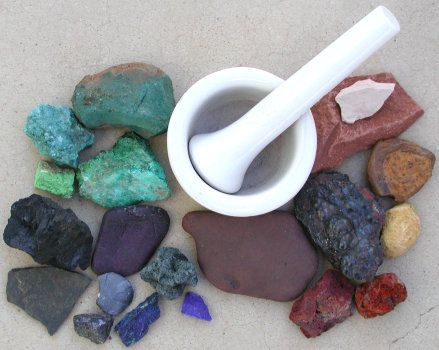

Natural Minerals
Thangka Paintings are painted using the natural minerals. These are firstly grind into the powder form and then used in the thangka as a paint.




